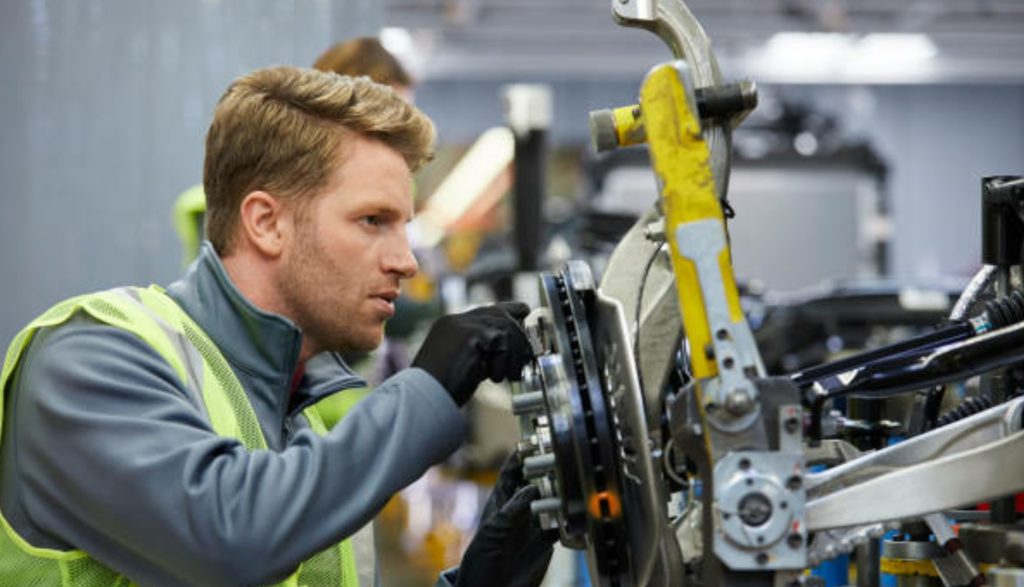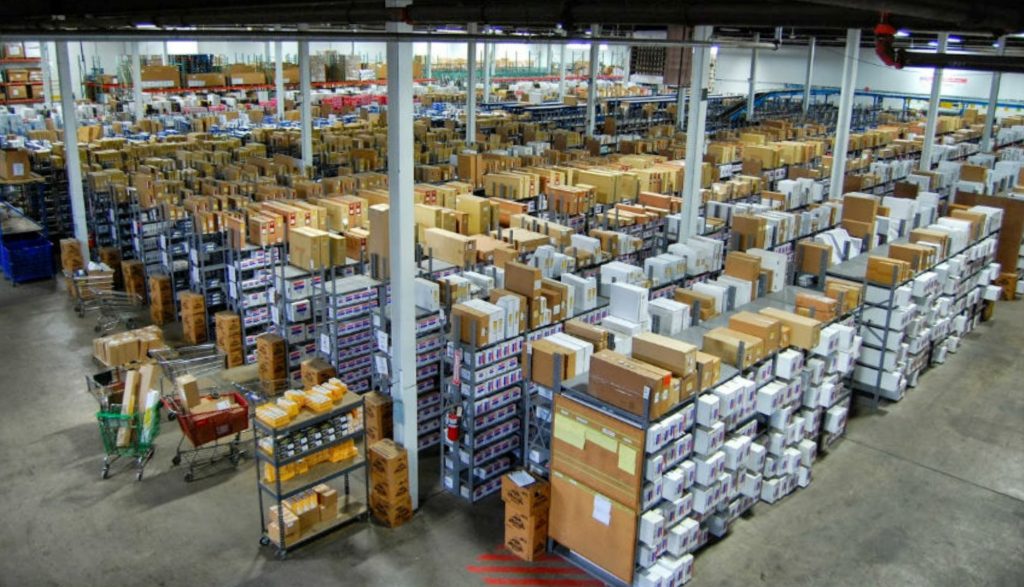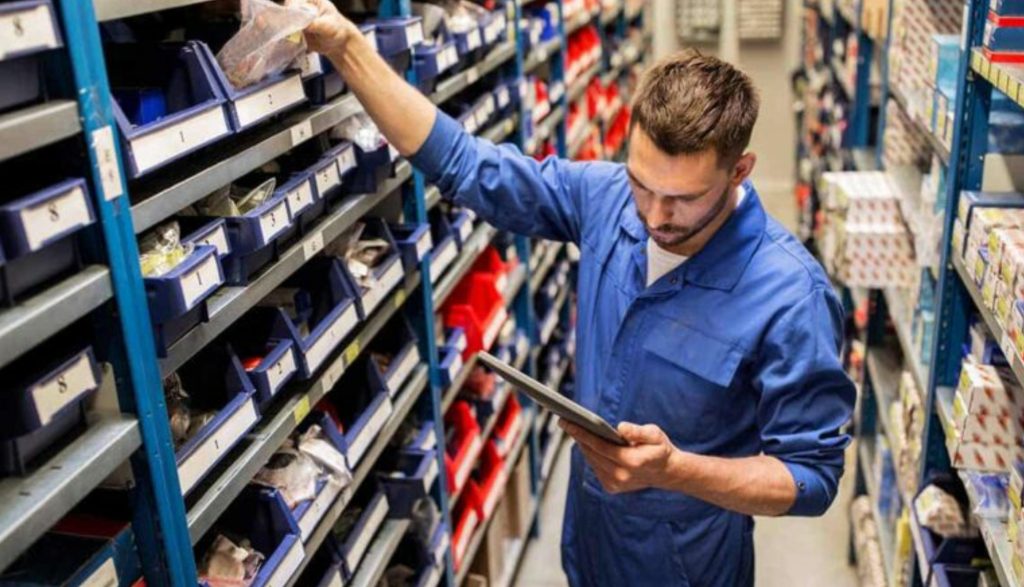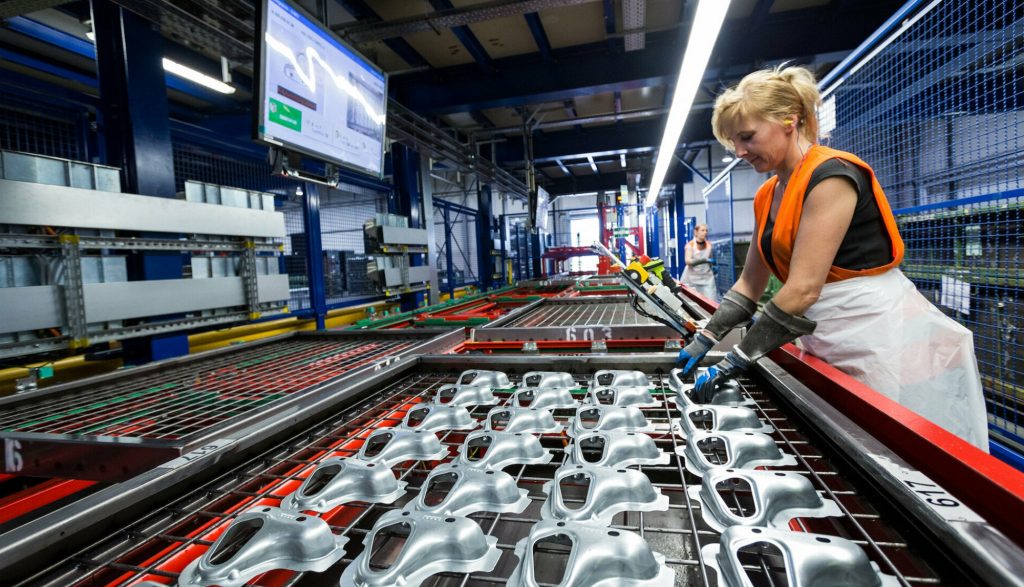Automakers & Original Equipment

Who Makes OE Parts, And How Can They Benefit Consumers Knowing Original Equipment (OE) Parts Original Equipment (OE) parts are components produced by Original Equipment Manufacturers (OEMs), who create parts specifically designed for vehicles during their initial production. These parts are made to meet strict quality standards and specifications set by the vehicle manufacturer, ensuring compatibility and performance. Typically, OE parts are characterized by their high quality, longevity, and reliability. This means that when consumers choose OE parts for repairs or replacements, they can expect an exact fit and operation that aligns with the original specifications of their vehicle. Consequently, using OE parts can significantly enhance the overall performance of the vehicle, providing peace of mind for consumers who prioritize reliability. When comparing OE parts to aftermarket alternatives, several key differences emerge that can influence consumer decisions. While aftermarket parts are often available at lower prices, they may not always offer the same level of dependability as OE parts, which are produced by the original manufacturers of the vehicle. Aftermarket parts can vary widely in quality, and their performance may not always meet the stringent standards set by OEMs. In contrast, OE parts typically come with better warranties, which are backed by the companies that produced the vehicle. This assurance can be crucial for consumers who want to avoid the potential pitfalls of cheaper alternatives, ultimately making OE parts a more reliable investment for vehicle maintenance. The use of OE parts plays a crucial role in vehicle maintenance and repair, contributing to the longevity and overall health of the vehicle. By opting for OE parts, consumers can ensure that their vehicles are repaired with components that are specifically designed for their make and model, which can lead to better performance and fewer mechanical issues in the long run. Moreover, using OE parts can help maintain the vehicle’s resale value, as potential buyers often look for cars that have been well-maintained with original components. Therefore, investing in OE parts during repairs not only supports the vehicle’s functionality but also enhances its overall value, making it a smart choice for consumers focused on both performance and investment. Major Manufacturers of OE Parts Leading automotive manufacturers play a vital role in the production of Original Equipment (OE) parts. These manufacturers are well-established companies that not only design vehicles but also produce the essential parts that go into them. Their commitment to quality ensures that OE parts meet stringent specifications, which is crucial for maintaining vehicle safety and performance. Some of the major players in this sector include brands like Ford, General Motors, and Toyota, all of which manufacture high-quality OE parts to fit their vehicles perfectly. Their focus on precision and reliability contributes to the overall durability of the vehicles, providing consumers with peace of mind. As a result, consumers can trust that OE parts are engineered to meet the same standards as the original components used in their cars. In addition to manufacturing their own OE parts, automotive manufacturers often collaborate with third-party suppliers to expand their product offerings and enhance innovation. These partnerships can lead to the development of specialized components that may not be economically feasible for the manufacturers to produce in-house. By outsourcing certain elements of production, OEMs can focus on their core competencies while still providing customers with a wider range of high-quality parts. Furthermore, these collaborations can drive down costs, as third-party vendors can source materials from various suppliers and offer competitive pricing. This dynamic not only benefits manufacturers by reducing production expenses but also allows consumers to access a broader selection of OE parts at potentially lower costs. Innovations in OE parts manufacturing are another significant aspect of the automotive industry that benefits consumers. Manufacturers are continually exploring new technologies and materials to enhance the durability, efficiency, and functionality of their parts. For instance, advancements in automation and robotics have streamlined production processes, resulting in higher precision and lower defect rates. Additionally, the use of advanced materials can lead to lighter and more fuel-efficient components, which align with the growing demand for environmentally friendly vehicles. By staying at the forefront of technological progress, automotive manufacturers can provide consumers with OE parts that not only meet high standards of quality but also contribute to better overall vehicle performance and sustainability. Benefits of OE Parts for Consumers One of the primary benefits of using Original Equipment (OE) parts is the assurance of quality and compatibility. OE parts are produced by the same manufacturer that supplied the components when the vehicle was originally assembled, ensuring that they meet the same high standards of quality and design. This means that consumers can expect a perfect fit and reliable performance, as OE parts are designed specifically for their vehicles. Additionally, using genuine OE parts minimizes the risk of compatibility issues that can arise with aftermarket alternatives, which may not align perfectly with the vehicle’s specifications. The guarantee of compatibility not only enhances the overall performance of the vehicle but also provides peace of mind to consumers, knowing that they are investing in parts that will function correctly. Another significant advantage of OE parts is their long-term cost-effectiveness. While it may be tempting for consumers to opt for cheaper aftermarket parts, these can often lead to higher costs in the long run due to potential defects or incompatibility issues. Non-OE parts may require more frequent replacements, resulting in increased labor and parts expenses over time. Conversely, OE parts are typically backed by warranties, which can cover defects and replacements without additional costs to the consumer. Therefore, although OE parts may have a higher upfront cost, their durability and reliability contribute to savings by reducing the likelihood of future repairs and replacements, making them a wise investment for vehicle maintenance. The impact of OE parts on vehicle performance and safety cannot be overstated. Genuine OE parts are engineered to match the original specifications of the vehicle, ensuring optimal performance and reliability. This precision not only enhances the functionality of the vehicle but
Warehouse Distributors

What Is The Purpose of Warehouse Distributors and What is Their Future Outlook The role of warehouse distributors in the supply chain Warehouse distributors play a crucial role in inventory management and storage solutions within the supply chain. Effective inventory management involves a range of processes, including tracking quantities, monitoring expiration dates, and organizing products for easy access. By utilizing advanced Warehouse Management Systems (WMS), distributors can automate and streamline these functions, ensuring that inventory is accurately monitored and efficiently stored. This ability to manage inventory effectively not only reduces the likelihood of stockouts or excess inventory but also enhances overall operational efficiency. Consequently, warehouse distributors serve as a vital link in ensuring that goods are readily available for distribution, thus preventing disruptions in the supply chain. In addition to inventory management, warehouse distributors are essential for order fulfillment and distribution efficiency. Once an order is received, products must be retrieved from storage, packaged, and prepared for shipment. A well-designed warehouse facilitates this process, allowing for quicker and more accurate order processing, which directly impacts customer satisfaction. Furthermore, distributed order management systems help determine the most cost-effective and efficient way to fulfill orders by analyzing various factors such as inventory levels and shipping options[8]. This focus on efficiency is vital in a competitive marketplace, where timely delivery can significantly influence customer loyalty and retention. Finally, warehouse distributors act as a crucial coordinator between manufacturers and retailers, ensuring a smooth flow of goods throughout the supply chain. They facilitate communication and collaboration between these two parties, allowing for better alignment of inventory levels and demand forecasting. By serving as intermediaries, warehouse distributors help prevent bottlenecks and ensure that products are available when needed, thereby enhancing the overall efficiency of the supply chain. Additionally, as eCommerce continues to grow, the importance of warehouse distributors in maintaining effective logistics and distribution networks becomes even more pronounced, making them indispensable to the future of retail and distribution industries. Benefits of using warehouse distributors for businesses One of the primary benefits of using warehouse distributors is their cost-effectiveness and ability to reduce overhead costs. By outsourcing warehousing needs, businesses can significantly cut expenses associated with maintaining their own facilities, including rent, utilities, and staffing. This cost-saving strategy allows companies to allocate resources more efficiently, enabling them to invest in other critical areas such as marketing, product development, or customer service. Moreover, many warehouse distributors operate on a shared-space model, where multiple businesses share warehouse space and resources, further driving down costs. As a result, businesses can benefit from economies of scale, leading to more competitive pricing and improved profit margins. Another significant advantage of warehouse distributors is their scalability and flexibility in operations. As businesses grow or experience fluctuations in demand, warehouse distributors can quickly adapt to changing needs, allowing companies to scale up or down without the burden of long-term commitments. This flexibility is particularly important in today’s dynamic market environment, where businesses must be agile to respond to consumer preferences and trends. For instance, excess inventory can be stored in warehouses, ensuring that businesses can manage their stock levels effectively without incurring unnecessary costs. Consequently, warehouse distributors provide a crucial backbone for businesses seeking to navigate the complexities of supply chain management while maintaining operational efficiency. Access to advanced technology and logistics solutions is another key benefit of utilizing warehouse distributors. Many modern warehouses leverage sophisticated inventory and warehouse management applications that facilitate real-time inventory tracking, data exchange, and efficient storage solutions. This technological integration not only speeds up delivery times but also enhances overall supply chain efficiency, allowing businesses to provide better service to their customers. As technology continues to evolve, warehouse distributors will increasingly adopt innovative solutions that streamline logistics processes, improve accuracy, and reduce costs. Thus, businesses partnering with warehouse distributors gain a competitive edge in the market through enhanced operational capabilities and improved service delivery. Future trends and challenges for warehouse distributors The growth of e-commerce has dramatically reshaped distribution strategies for warehouse distributors. As consumer expectations evolve toward faster and more reliable delivery, businesses are compelled to adapt their logistics operations accordingly. This shift has resulted in an increased demand for larger storage facilities and more efficient distribution networks. For instance, warehouses are now strategically positioned closer to urban centers to facilitate quick last-mile delivery, thereby reducing shipping times and enhancing customer satisfaction. Consequently, warehouse distributors are re-evaluating their inventory management systems and logistics processes to accommodate these changes, leading to innovative solutions that enhance their operational capacity and responsiveness. Technological innovations and automation in warehousing are also pivotal in shaping the future of warehouse distributors. The integration of smart technologies into warehousing processes has revolutionized inventory control, material handling, and order fulfillment. For example, automated systems are designed to minimize manual tasks and accelerate processes, from receiving goods to shipping them out. The rise of flexible automation enables warehouses to adapt quickly to changing demands, offering unprecedented efficiency and scalability. Moreover, advanced solutions such as automated sorting and Cubiscan-based box selection are streamlining operations and reducing human error, thereby enhancing overall productivity within distribution centers. Sustainability practices are becoming increasingly important for warehouse distributors as environmental considerations gain prominence in business operations. Implementing sustainable warehousing strategies helps reduce environmental impact while cutting energy costs and meeting consumer demands for eco-friendly practices. A sustainable warehouse prioritizes efficient transportation routes to minimize carbon emissions and enhance resource efficiency, contributing to a greener supply chain. Furthermore, the adoption of green warehouse practices not only supports environmental goals but also boosts brand reputation among environmentally conscious consumers. As the demand for sustainable solutions grows, warehouse distributors are likely to continue embracing these practices, ensuring they remain competitive in an evolving market. What Warehouse Distributors Should I Work With & How Identifying the right warehouse distributors Assessing your product needs and volume is a crucial first step in identifying the right warehouse distributors for your business. Understanding the specifics of what you require will help you narrow down your options
Etailers & Retailers

Compete With Major Etailers & Retailers Without The Monster Budget Strategies for competing with major etailers and retailers Utilizing niche marketing techniques is a powerful strategy for competing with major etailers and retailers, especially for businesses with limited budgets. Niche marketing focuses on a specific group of consumers who are more likely to purchase a given product, allowing businesses to prioritize quality over quantity. By identifying a unique segment of the market, businesses can tailor their offerings and marketing messages to resonate deeply with their target audience. This targeted approach not only helps in differentiating the brand but also fosters customer loyalty. Businesses can achieve this by: – Conducting thorough market research to understand the specific preferences and needs of their niche audience. – Developing specialized products or services that cater directly to these identified needs. – Creating personalized marketing campaigns that speak directly to the interests and values of their niche market. Leveraging social media and digital marketing is essential for smaller retailers looking to compete against larger entities. Organic social media marketing, in particular, allows businesses to create a brand presence that resonates with their ideal customers without incurring substantial costs. By focusing on platforms such as Instagram and YouTube, retailers can engage directly with consumers, showcasing their products and building a community around their brand. Effective strategies include: – Regularly posting engaging content that highlights product features and customer experiences. – Running contests or promotions that encourage user-generated content and increase visibility. – Collaborating with influencers who align with the brand’s values to reach a broader audience while maintaining authenticity. Building strong customer relationships and loyalty is crucial for long-term success in a competitive retail landscape. Establishing a solid connection based on trust and communication not only enhances customer satisfaction but also maximizes overall return on investment (ROI). By focusing on customer relationship management, retailers can encourage repeat purchases and foster brand advocacy. Strategies to enhance customer relationships include: – Creating loyalty programs that reward repeat customers with discounts or exclusive offers. – Actively seeking customer feedback to improve products and services. – Engaging with customers through personalized emails and targeted marketing campaigns to make them feel valued and appreciated. By implementing these strategies, smaller retailers can effectively compete with larger etailers and retailers, maintaining a strong market position even without substantial marketing budgets. Importance of catalog management in a competitive landscape Effective catalog management plays a crucial role in streamlining product information and inventory, especially in a competitive retail landscape. With the proliferation of eCommerce platforms, businesses must ensure that their product information is consistent and accurate across all channels. This not only reduces errors but also enhances efficiency when managing inventory levels. By validating and cross-checking product details with inventory data, retailers can maintain up-to-date catalogs that reflect real-time stock availability. As a result, businesses can improve customer satisfaction by preventing issues such as out-of-stock items or misleading product descriptions, which ultimately leads to a better overall shopping experience. Enhancing user experience through thoughtful catalog design is another essential aspect of effective catalog management. A well-designed catalog can significantly influence consumer behavior, drawing customers in and encouraging purchases. When catalogs are visually appealing and easy to navigate, customers are more likely to spend time exploring the offerings, which can lead to increased sales. Moreover, when retailers quickly update their catalogs on their websites, they can present new offerings to customers in a timely manner, reducing the lag between product launch and availability. By prioritizing catalog design, retailers can create engaging shopping environments that keep customers coming back. Utilizing data analytics for targeted marketing is pivotal for retailers aiming to compete with major eTailers and maintain relevance in the market. By collecting and analyzing customer data from various touchpoints, businesses can gain valuable insights into consumer preferences and purchasing habits. This information allows retailers to tailor their marketing strategies, ensuring that promotions and product recommendations resonate with their target audience. For instance, retailers can leverage data analytics to optimize inventory placement and pricing strategies, leading to smarter decision-making and enhanced profitability. By integrating data-driven approaches into catalog management, retailers can increase brand visibility and drive sales effectively. The benefits of an end-to-end solution for smaller retailers An end-to-end solution for smaller retailers offers significant benefits through the integration of supply chain management. This comprehensive approach encompasses various elements, including purchasing, inventory control, logistics, and quality assurance. By effectively managing these processes, small retailers can enhance their operational efficiency and reduce costs, which is crucial in a competitive market. For instance, an integrated supply chain allows retailers to synchronize their sourcing, production, and distribution efforts, ensuring that products are available when and where they are needed. This streamlined process not only cuts down on waste and delays but also improves customer satisfaction through timely delivery and reduced stockouts. Efficient order fulfillment processes are another critical advantage of an end-to-end solution for smaller retailers. The order fulfillment process, which involves receiving goods, processing orders, and delivering them to customers, is essential for maintaining a brand’s reputation and profitability. Smaller retailers can leverage technology and strategic planning to optimize this process, ensuring that they can compete effectively with larger etailers and retailers. By focusing on key fulfillment strategies, such as inventory management and order accuracy, these retailers can minimize errors and enhance the overall customer experience. This efficiency not only leads to increased customer loyalty but also helps drive repeat business, which is vital for long-term growth. Real-time customer insights and feedback mechanisms are integral to the success of smaller retailers adopting an end-to-end solution. By analyzing data points from customer interactions, retailers can gain a deeper understanding of consumer behavior and preferences. This insight allows them to tailor their offerings and marketing strategies, ultimately improving customer engagement and retention. For example, utilizing feedback mechanisms enables retailers to quickly identify and address any concerns or trends that arise, fostering a more responsive and customer-centric approach. Additionally, by strengthening relationships with customers through personalized experiences, smaller retailers can create
Manufacturers

As a Manufacuter, Where Should You Focus Your Deployment of Capital Strategic investment in technology for manufacturing efficiency One of the most critical areas for strategic investment in manufacturing is the integration of automation and robotics. These technologies not only improve production efficiency but also enhance precision and reduce human error. By deploying automation tools, manufacturers can streamline repetitive tasks, allowing human workers to focus on more complex and value-added activities. The implementation of robotics can lead to significant cost savings and improved output, as these machines can operate continuously without fatigue. Additionally, automation can facilitate better inventory management and production scheduling. This shift towards automation is essential for manufacturers looking to stay competitive in a rapidly evolving market. Implementing IoT (Internet of Things) solutions is another strategic investment that manufacturers should prioritize. IoT technologies offer the ability to connect various machines and devices, enabling real-time monitoring and data collection across the production line. This connectivity allows manufacturers to gain valuable insights into their operations, facilitating improved decision-making and operational efficiency. For instance, by monitoring equipment performance, manufacturers can preemptively address maintenance issues, minimizing downtime and maximizing productivity. Furthermore, IoT solutions can enhance supply chain visibility, enabling better inventory management and demand forecasting. As a result, investing in IoT can lead to increased profitability and a more agile manufacturing operation. Data analytics for production optimization represents a crucial area for capital deployment within the manufacturing sector. By leveraging advanced data analytics tools, manufacturers can analyze production processes, identify inefficiencies, and implement data-driven strategies to enhance performance. This approach allows for continuous improvement and adaptability to changing market demands. For example, manufacturers can use analytics to monitor key performance indicators (KPIs) and adjust production schedules accordingly, ensuring that resources are allocated efficiently. Moreover, data analytics can aid in understanding customer preferences and behavior, which can inform product development and marketing strategies. Ultimately, a focus on data analytics empowers manufacturers to optimize their operations and drive sustainable growth. Enhancing network connections for improved supply chain management Building strong partnerships with suppliers is crucial for enhancing network connections and improving supply chain management. Establishing these partnerships allows manufacturers to foster collaboration, ensuring a smoother flow of materials and information. By prioritizing trust and transparency, companies can create a solid foundation for long-term relationships with suppliers. This includes regular communication regarding expectations, performance metrics, and any potential challenges that may arise. Strong partnerships can lead to various benefits, such as: – Improved negotiation terms – Enhanced reliability in supply delivery – Joint problem-solving during supply chain disruptions These advantages ultimately contribute to a more resilient supply chain, enabling manufacturers to adapt to market changes more swiftly. Utilizing cloud-based collaboration tools can significantly enhance communication and coordination among supply chain partners. These tools enable real-time sharing of information and documents, streamlining processes and reducing the risk of miscommunication. By adopting cloud solutions, manufacturers can ensure that all parties are on the same page regarding inventory levels, order statuses, and production schedules. This collaborative approach offers several key benefits, including: – Increased efficiency in decision-making – Reduced lead times for product delivery – Enhanced visibility across the supply chain As a result, manufacturers can respond more effectively to customer demands and market fluctuations, ultimately improving overall supply chain performance. Streamlining communication channels is essential for maintaining effective relationships within the supply chain. Manufacturers should assess their current communication methods and identify areas for improvement, whether through adopting new technologies or refining existing processes. Leveraging tools such as instant messaging platforms, video conferencing, and integrated project management software can facilitate faster and clearer communication. Key strategies to enhance communication include: – Establishing regular check-ins with suppliers and partners – Utilizing automated updates for order status and inventory levels – Encouraging open feedback loops to address concerns promptly By enhancing communication, manufacturers can minimize misunderstandings and foster a collaborative environment that supports efficient supply chain management. This proactive approach ultimately leads to improved operational outcomes and stronger partnerships. Maximizing market share through digital marketing strategies Search Engine Optimization (SEO) is a crucial strategy for manufacturers looking to maximize their market share in the competitive digital landscape[9]. By improving a website’s visibility on search engines like Google, manufacturers can attract a larger audience and generate more qualified leads. Effective SEO techniques include keyword research, content optimization, and on-page SEO strategies that enhance the user experience. For instance, leveraging long-tail keywords relevant to manufacturing processes can help in targeting niche markets. Additionally, regularly updating content and optimizing meta tags can improve search rankings. Integrating these tactics can lead to sustainable growth for a brand, making SEO an essential focus area for capital deployment[6]. In tandem with SEO, Pay-Per-Click (PPC) advertising campaigns present another avenue for manufacturers to enhance their online visibility and market share. This model allows businesses to pay for ads that appear on search engines and other platforms, driving immediate traffic to their websites. PPC campaigns can be particularly effective when targeting specific demographics or geographic regions, ensuring that marketing efforts reach the most relevant audience. Moreover, the ability to analyze and adjust PPC campaigns in real-time provides manufacturers with valuable insights into consumer behavior and preferences. By carefully crafting ad copy and selecting the right keywords, manufacturers can optimize their PPC strategies to achieve a higher return on investment (ROI) and outpace competitors. Ensuring product availability and accessibility online is vital for manufacturers aiming to capture and maintain market share. A seamless online shopping experience can significantly influence consumer purchasing decisions. Manufacturers should focus on optimizing their e-commerce platforms to guarantee that products are easy to find and purchase. This involves implementing clear product descriptions, high-quality images, and customer reviews to build trust with potential buyers. Additionally, utilizing inventory management systems to keep product availability updated in real-time can prevent lost sales due to stockouts. By enhancing the accessibility of their products online, manufacturers can not only drive sales but also foster brand loyalty among customers, ultimately solidifying their position in the market. Developing SKUS &
Technology

Electric Cars Are Soulless and Boring This is the common opinion of so-called gearheads and car enthusiasts on Reddit and other online forums. While electric cars offer over-the-top performance, especially when compared to their internal combustion counterparts, do they miss a key component: a visceral experience? Which is a bit baffling because if you think about it, an EV could have any, let’s call it, engine sound experience as there is no engine sound to begin with. That is exactly what Johannes Luckemeier thought after driving his Tesla he just purchased. Due to his background in automotive sound design, he started tinkering with an app speaker combination to give the electric car its soul, more specifically a personalized soul. Fast forward 3 years, and the Glydsphere system is providing a highly personalized engine sound experience to Tesla drivers worldwide. The concept is simple and straightforward: a high-powered speaker with a remote-controlled power bank sits in the frunk, which means no installation, no hole drilling, or costly car modifications. The specifically engineered sound-designed speaker gets its sound wirelessly but in real time (it’s not Bluetooth) from a phone app that is based on a state-of-the-art game engine. The phone app receives signals from the car also in real time and wirelessly to know exactly what the car does and to dynamically change the engine sound experience just like a real engine does. With over 50 unique sound sets and growing, the Glydsphere system has a multitude of options to have any engine sound imaginable, from iconic race cars to intergalactic engine sounds to famous movie vehicles. If that’s not enough, you can create your own interactive sound sets and load them in the app. Additionally, the mother company of Space Gravity prepared a concept to create “real” electric engine sound without speakers or sound files; the concept is patent pending, of course, and meant for high-end electric sports cars. To release the next generation of the product, which is mainly based on customer feedback, and work on the prototype of the new device to create real engine sound, Space Gravity with Glydsphere is raising money via an equity crowdfunding campaign on Microventures. https://invest.microventures.com/offerings/glydsphere Why Business Intelligence Is Failing Auto Parts Sellers – And How To Fix It Selling auto parts isn’t for the faint of heart. Selling auto parts isn’t for the faint of heart. Slim margins. Shifting prices. Thousands of SKUs to manage… staying profitable often feels like an uphill battle. But when everything clicks, the rewards are huge. By 2024, most of us understand that a strong data strategy is key to smarter decisions and driving profitability. The problem? Business Intelligence (BI) tools still aren’t delivering on that promise. Traditional BI tools aren’t built for the nuances of the auto parts industry. They don’t account for complexities like core charges or the fact that customers are buying solutions for specific year/make/model vehicles-not just parts. These tools throw a lot of numbers at you-revenue, sales volume, and sometimes even profit margins-but rarely connect the dots to show what you actually need to know and what to do next. BI Tools: Flooding You with Data, But Offering Little Clarity Most BI platforms take a “show you everything” approach, flooding you with dashboards and reports that are much easier to create than they are not actually navigate. Mostly only scratch the surface. Unless you know exactly what you’re looking for, it’s easy to feel lost the moment you log in, with no idea really where to start. You need insights delivered to the right person, with the right context, at the right time—along with clear recommendations for what to do next. And those insights must be specialized, accounting for the unique needs of the auto industry and your specific role. Generic BI tools don’t consider this. Whether you’re dealing with slow-moving inventory or responding to shifts in demand, you need a solution that cuts through the noise and helps you focus on what matters. That’s why we built Tromml—a BI platform designed specifically to help auto parts sellers uncover the insights that drive profitability. Like a mining trommel that filters through dirt to find gold, our platform sifts through data to reveal valuable insights hidden beneath the surface. Here’s a recent example: one of our clients, an eCommerce auto parts retailer, was struggling to understand which promotions were truly driving revenue and which were quietly eroding profits. Since their business involves a lot of kitting, traditional BI methods would have only shown overall sales trends without pinpointing how specific promotions were impacting margins or individual SKUs. With Tromml, they were able to quickly drill down into the data and identify which promotions were working and where they needed to make adjustments. That kind of clarity made all the difference. AI as a Partner in Decision-Making, Not a Replacement AI gets a lot of hype, and for good reason—it has the potential to transform how businesses use data. But here’s the catch: AI alone isn’t the solution. It’s a tool that, when applied correctly, enhances human decision-making rather than replacing it. At Tromml, we use AI to deliver relevant insights and empower non-technical users to extract data and instantly generate reports or analysis. Our machine learning system continuously learns from your data and interactions, getting smarter at uncovering what matters most. But AI isn’t magic. It won’t solve all your problems overnight, and it can’t replace the intuition you’ve built over the years. What it can do is surface critical insights faster, helping you act before it’s too late. The future of BI in auto parts isn’t about more data—it’s about better, actionable insights tailored to your challenges. Whether it’s optimizing pricing, managing promotions, or identifying top-performing products, you need tools that filter out the noise and spotlight what matters. At Tromml, we’re excited to help auto parts sellers turn data into decisions that drive profitability. As AI evolves, BI tools will become even more specialized, but the goal stays the same:
Magazine Volume 1

-FEATURED SECTIONS- Technology Manufacturers Etailers & Retailers Warehouse Distributors Automakers & Original Equipment October 2024 -ARTICLES- Electric Cars Are Soulless and Boring Why Business Intelligence Is Failing Auto Parts Sellers – And How To Fix It Historical Perspective on Automotive Parts Technology & Why eCommerce Is Pivotal for Future Growth Connecting the eCommerce Strategy Through Digital Transformation With Foundational Partners As a Manufacuter, Where Should You Focus Your Deployment of Capital Compete With Major Etailers & Retailers Without The Monster Budget What Is The Purpose of Warehouse Distributors and What is Their Future Outlook Best In Class Warehouse Distributors in the Automotive & Who Should I Work With How To Select A Platform to Position Your Organization for Success Diversity Your Growth Channel Through Inclusion of B2B, D2C & Connection WDs to Fulfill Demand Are Automakers Adjusting to the Hybrid Model Rather Than EV Only Parts eCommerce & How SKU Based Analytics Can Differentiate from The Competitors How to Capture International Demand & Grow Your eCommerce Business Developing SKUS & Categories to Bend The Growth Curve OE Vs Aftermarket And What Are Major Differentiators Between the Two What Warehouse Distributors Should I Work With & How SUBSCRIBER EXCLUSIVE [noptin-form id=228825] LATEST ISSUES